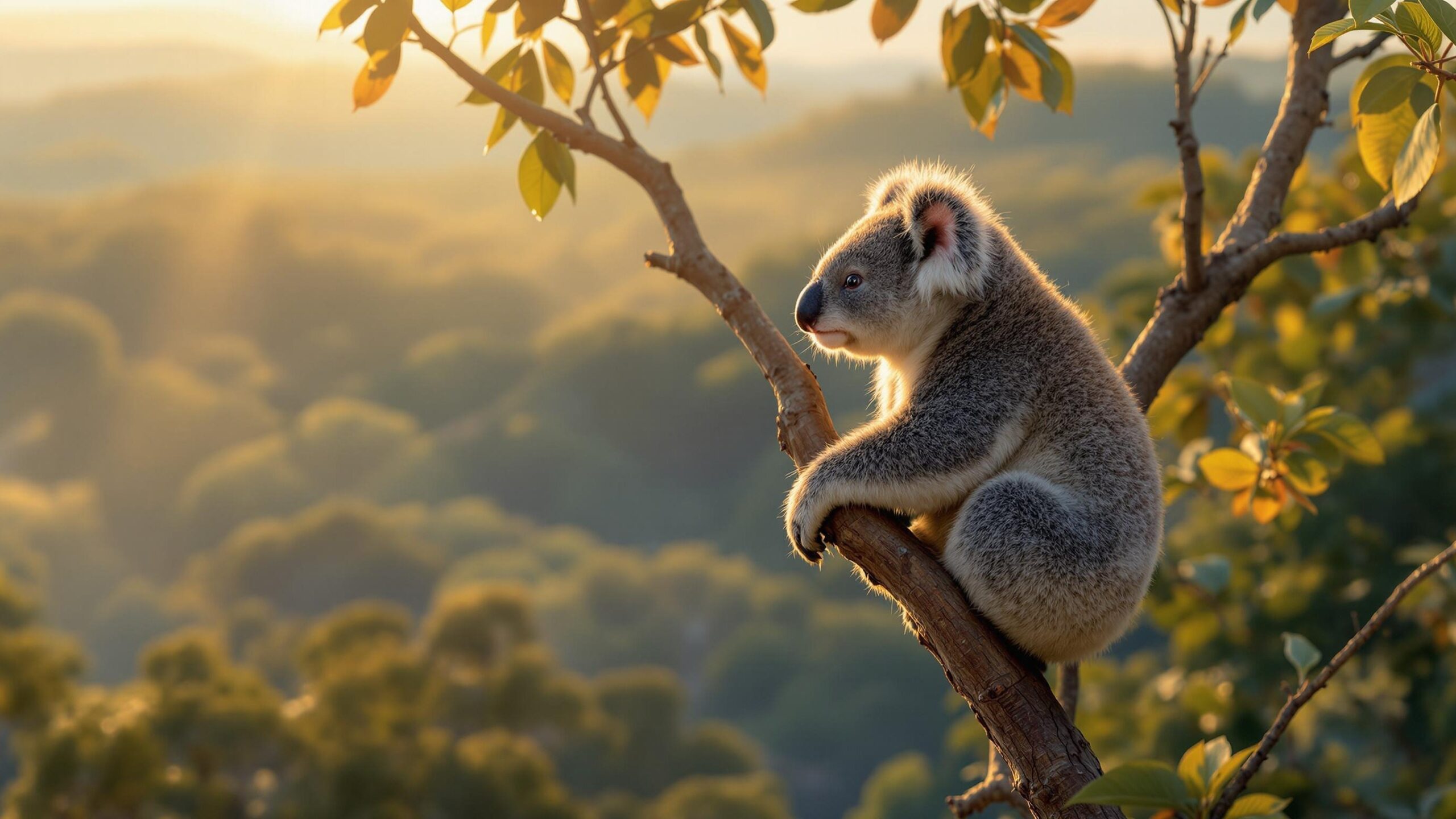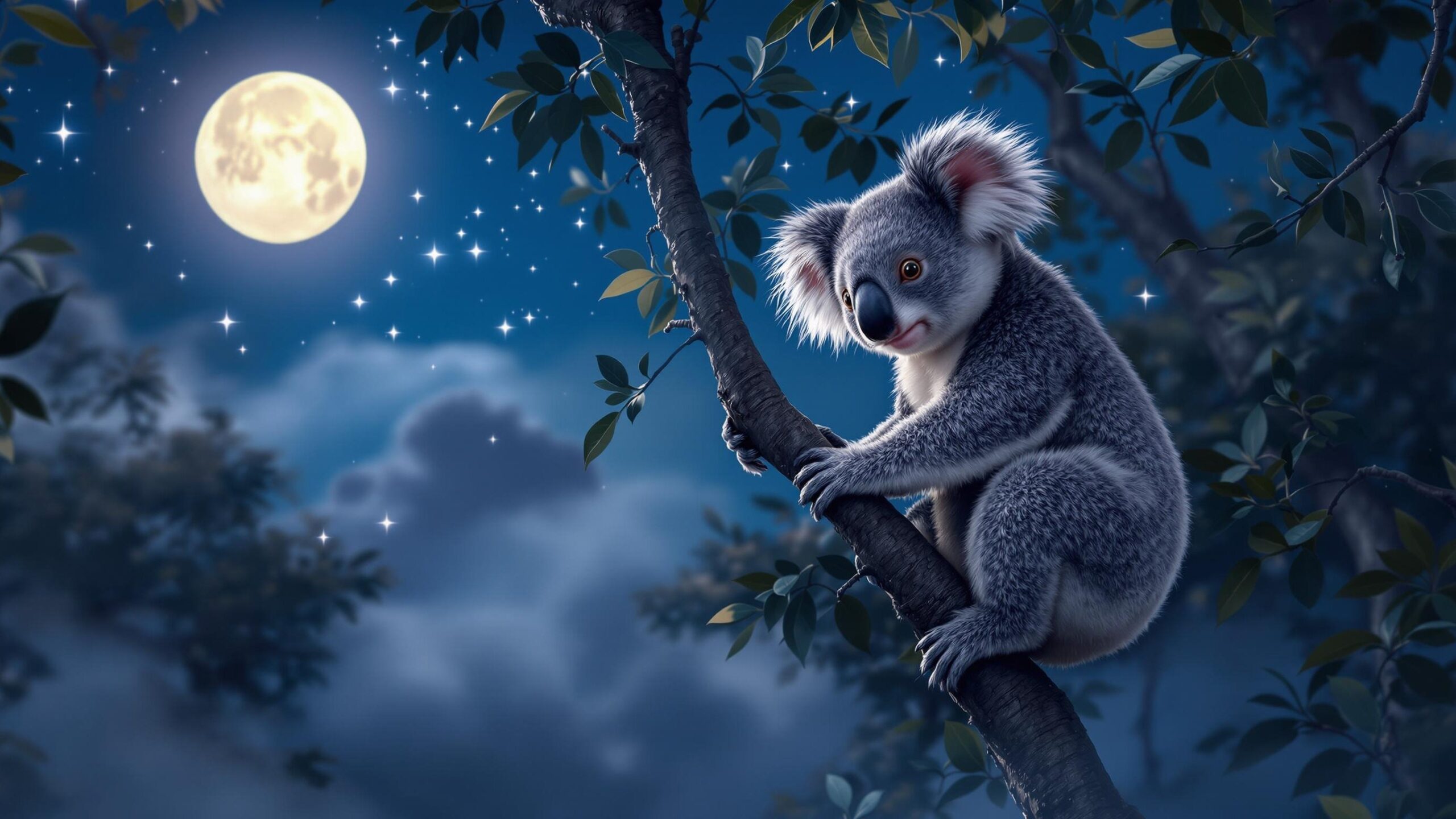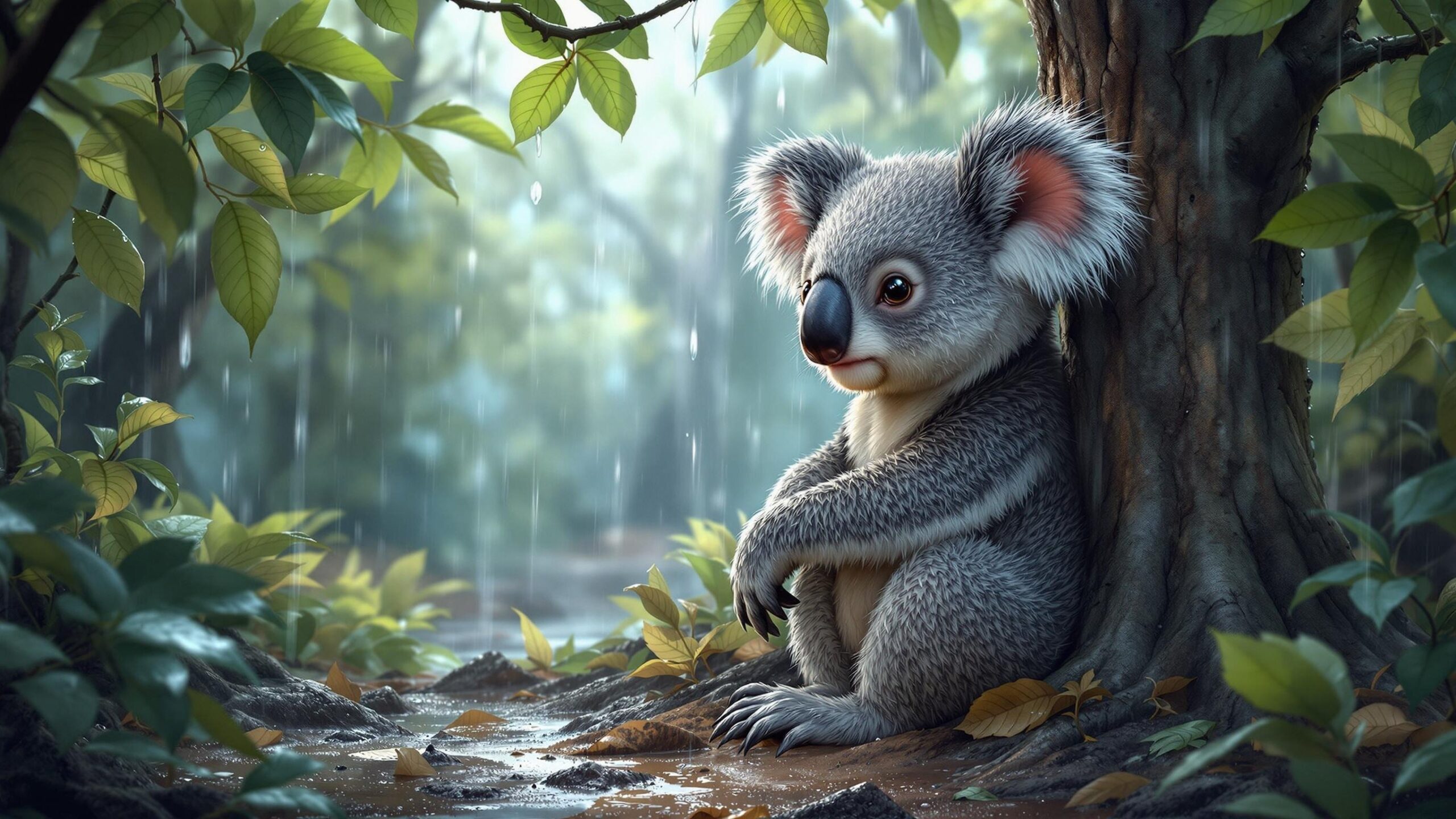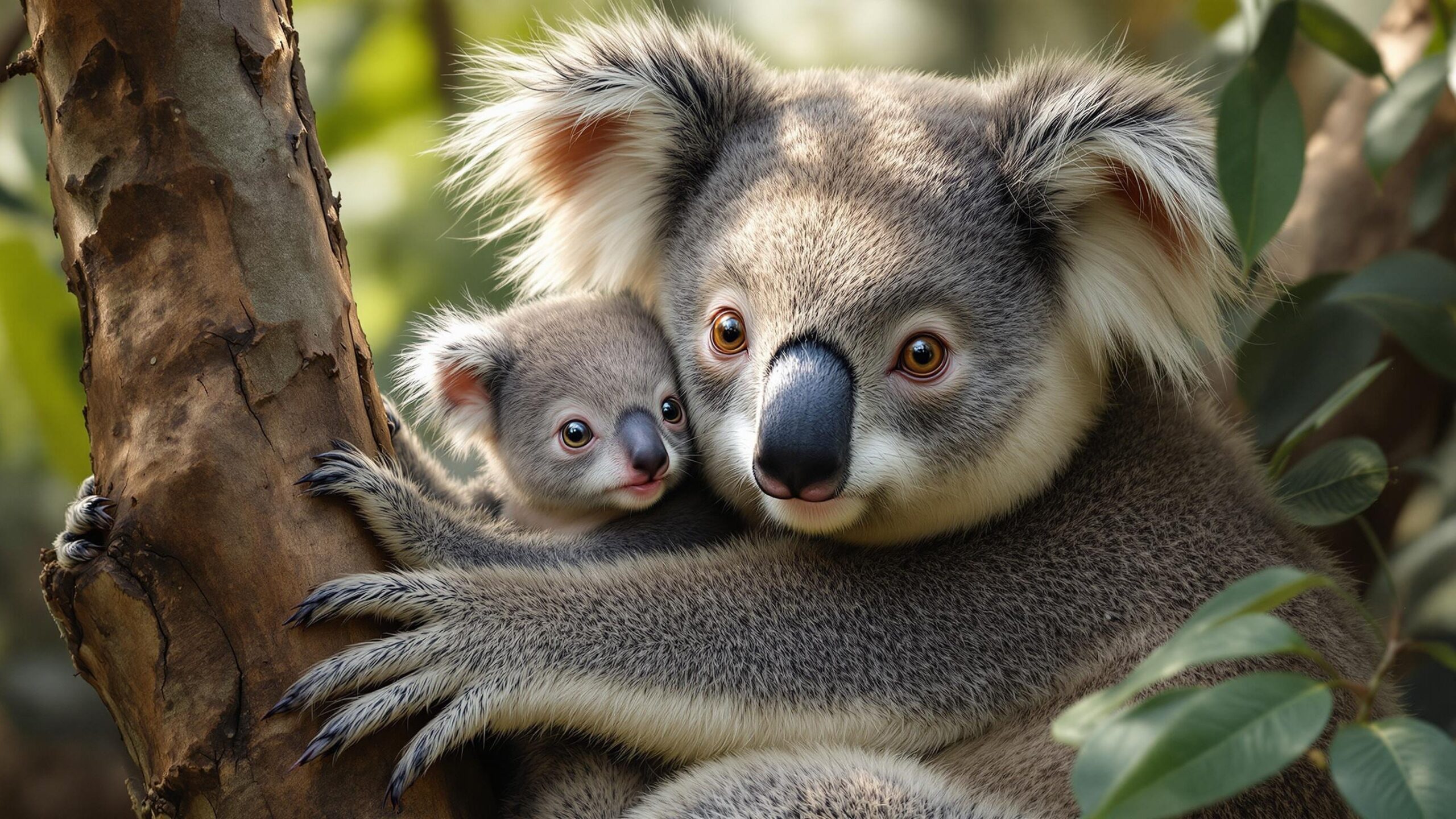Koala: The Sleepy Climber of Australia’s Eucalyptus Forests
Few animals inspire the same instant affection as the koala. With their fluffy ears, large noses, and sleepy expressions, koalas have become international icons of Australia’s wildlife. Despite their cuddly appearance, these marsupials are highly specialized animals, adapted to a very specific lifestyle in the treetops of eucalyptus forests. Scientifically known as Phascolarctos cinereus, the koala is a solitary, tree-dwelling mammal that plays a key role in Australia’s ecosystem and cultural identity. From their unique biology to their daily behaviors, koalas offer a fascinating glimpse into how nature shapes animals to thrive in specific environments. This in-depth, user-friendly guide explores everything there is to know about koalas—what they are, how they live, what they eat, where they’re found, and why they matter. It’s designed to be accessible to anyone with a curiosity about wildlife, while remaining grounded in science and conservation awareness.
What Exactly Is a Koala?
Despite the popular nickname “koala bear,” koalas are not bears at all. They are marsupials, which means they carry and nurse their young in a pouch. Marsupials are a class of mammals primarily found in Australia and nearby islands, with kangaroos, wombats, and wallabies among their better-known relatives. Of all marsupials, the koala is one of the most distinct, both in appearance and lifestyle. Koalas belong to the family Phascolarctidae and are the only surviving member of the genus Phascolarctos. Fossil evidence shows that their ancestors were much more diverse, including multiple now-extinct species that once roamed Australia in varying habitats. Today’s koalas are the result of millions of years of adaptation to the eucalyptus forests of eastern and southeastern Australia. They have thick, woolly gray fur that helps regulate temperature and resist rain, large round ears for excellent hearing, and a large black nose that gives them an outstanding sense of smell—essential for identifying eucalyptus trees. Their sharp claws and opposable digits make them excellent climbers, perfectly suited to life in the treetops.
Koalas and the Eucalyptus Obsession
One of the most fascinating aspects of the koala’s life is its almost exclusive diet. Koalas eat eucalyptus leaves—and almost nothing else. This diet might sound limiting, but they’ve evolved complex adaptations to make it work. Eucalyptus leaves are fibrous, low in nutrition, and filled with natural toxins that most animals cannot tolerate. Koalas, however, have a highly specialized digestive system that includes an enormous cecum, filled with bacteria that break down the toxic compounds and extract the maximum amount of nutrients.
Even among eucalyptus species, koalas are picky eaters. Out of over 700 eucalyptus species, koalas tend to favor around 30, and each individual has its own preferences based on taste and chemical makeup. Their sense of smell allows them to detect which leaves are safest and most nutritious. Koalas can eat up to 1.5 pounds of leaves per day, which helps meet both their nutritional and hydration needs, as eucalyptus contains enough water to keep them from needing to drink frequently. Because digesting such a difficult diet takes so much energy, koalas conserve it in a very simple way—they rest. Koalas sleep or lounge for up to 20 hours a day. This sedentary lifestyle is not laziness but a biological necessity. The remaining hours are spent eating, grooming, moving between trees, and engaging in social or mating behavior.
Where Koalas Live and How They Survive
Koalas are native only to Australia, and their habitat is tightly tied to the availability of eucalyptus trees. They are found in a range that stretches from far northern Queensland through New South Wales and into Victoria and parts of southeastern South Australia. Within this range, koalas inhabit woodlands, open forests, and even some suburban and rural areas where suitable trees remain. Their territories vary greatly in size, depending on food availability, population density, and landscape conditions. A koala’s home range can consist of just a few favorite trees or stretch across several dozen acres. Males typically maintain larger territories that may overlap with several females, especially during the breeding season.
Koalas are mostly solitary, except for mothers and joeys or during mating interactions. Each individual tends to have a preferred set of trees that it returns to repeatedly, using scent markings and vocal calls to establish its presence and deter others. Male koalas have a scent gland on their chest that they rub on tree bark as a form of chemical communication. Koalas spend almost all of their time in the trees, only coming to the ground to move between them. On the ground, they are slow and vulnerable, though they can move quickly in short bursts when threatened. In the trees, they are agile and secure, using their powerful limbs, strong claws, and padded paws to climb, leap, and rest.

Reproduction and Life Cycle of Koalas
Koala reproduction follows the typical marsupial pattern. Breeding season generally occurs between September and March, during which males use deep, resonant bellows to advertise themselves to females and warn off other males. These calls can be heard from far distances, particularly at night, and are surprisingly loud coming from such a calm-looking animal. After a successful mating, the female carries the fertilized embryo for just about 35 days before giving birth to a tiny, undeveloped joey, roughly the size of a jellybean. The newborn instinctively crawls into the mother’s pouch, where it latches onto a teat and continues to develop for about six months. During this time, it is completely dependent on the pouch environment.
After emerging from the pouch, the joey rides on the mother’s back and begins to explore the outside world. To prepare its digestive system for eucalyptus, the joey eats a specialized fecal matter called “pap,” which contains the mother’s gut bacteria. This helps establish the microbial community necessary to process eucalyptus toxins. By around 12 months old, the joey becomes more independent, though it may stay near the mother for a few more months. Females can breed each year and may raise one joey at a time, contributing to relatively slow population growth compared to some other mammals.
Regional Differences Among Koalas
Though they are a single species, koalas vary noticeably across their geographic range. These differences are shaped by climate, habitat type, and natural selection. Koalas in Queensland tend to be smaller, with lighter fur and shorter, thinner coats. This helps them cope with the warm, humid conditions of the state’s coastal and inland forests. These koalas are often more visible to humans, as they inhabit areas near urban development and roadways, leading to both increased sightings and greater risks. In contrast, koalas in Victoria and South Australia are significantly larger and have denser, darker fur. This heavier coat helps insulate them against the colder winters of the southern regions. These southern populations often live in more remote or protected woodlands, and some areas have required population management due to limited habitat or food resources. New South Wales sits in the middle, both geographically and in terms of koala size and coat characteristics. The state supports some of the largest koala populations and a wide range of habitats, from coastal bushland to inland forest corridors. These regional differences not only highlight the adaptability of the species but also the importance of understanding local environmental conditions when planning habitat conservation or restoration.

Koalas in the Ecosystem
Koalas serve a valuable role in Australia’s ecosystems. As herbivores and primary consumers, they help regulate the growth and renewal of eucalyptus trees. Their selective browsing patterns can encourage new leaf growth and influence which tree species dominate in certain areas. This shaping of the forest can impact the broader composition of flora and fauna, including insects, birds, and other tree-dwelling animals. Their presence also contributes to nutrient cycling. Koala feces add organic matter to the forest floor, supporting soil health and plant growth. In some cases, their favorite trees become microhabitats for other species, hosting entire mini-ecosystems within the canopy.
Additionally, koalas serve as indicators of forest health. Because they are sensitive to environmental changes and require intact corridors of eucalyptus trees to survive, their population trends can reflect the overall condition of their habitat. When koala numbers drop, it may be a sign that an ecosystem is under stress due to land clearing, drought, fire, or disease.
Koalas and Human Interaction
Koalas are deeply embedded in Australian identity. From tourism advertisements to children’s books and souvenirs, they symbolize the uniqueness of the continent’s wildlife. Visitors from around the world travel to wildlife parks and national forests hoping to catch a glimpse of a koala dozing in a tree or munching leaves. This popularity has translated into a strong public interest in koala welfare. Community groups, wildlife carers, and conservation organizations across Australia are dedicated to protecting koala populations, rescuing injured individuals, and preserving their habitats. At the same time, koalas face real pressures from human expansion. Habitat loss from urban development, agriculture, and infrastructure poses the most significant threat. Roads fragment their movement corridors, and domestic dogs, as well as vehicle strikes, are common causes of injury and death in urban areas. Disease is also a concern. Chlamydia, a bacterial infection affecting many wild populations, can cause blindness, infertility, and death if untreated. Research and vaccination programs are underway to help manage outbreaks in vulnerable regions. Despite these challenges, koalas remain widespread in many areas, and careful planning and public awareness are helping to balance the needs of human communities with those of their iconic neighbors.

Looking Ahead: The Future of Koalas
The future of the koala is not written in stone. While they are listed as vulnerable nationally, their outlook varies by region. In some areas, particularly parts of Victoria and South Australia, populations are stable or growing. In others, especially along the east coast, habitat loss and environmental stressors require close monitoring and proactive solutions. The story of the koala is ultimately a story of coexistence. These animals have adapted to thrive in the treetops of Australia, but their survival now depends on our ability to maintain those trees—and the ecosystems they support. Through thoughtful land use, wildlife corridors, community engagement, and continued research, it’s possible to protect koalas and the forests they call home. They remind us of the value of slowing down, living in harmony with our environment, and cherishing the natural wonders that make each region unique. Watching a koala doze in a sun-dappled eucalyptus tree is more than just a wildlife encounter—it’s a quiet lesson in resilience, adaptation, and the beauty of stillness.
The Endearing Appeal of the Koala
Koalas have earned their place as one of the most beloved animals on Earth, not just because of how they look, but because of how they live. Their calm demeanor, tree-bound existence, and intricate biological adaptations make them one of nature’s quiet marvels. Learning about koalas offers more than just trivia—it opens a window into Australia’s rich ecosystems, the challenges of wildlife conservation, and the delicate connections between animals and the forests they inhabit. Whether you’re exploring the forests of Queensland, peering through binoculars in New South Wales, or visiting a sanctuary in Victoria, the presence of a koala adds something special to the experience. Their story continues to evolve, shaped by science, community, and the trees themselves. For anyone who loves animals, nature, or simply wants to better understand one of Earth’s most iconic creatures, the koala offers a compelling journey of discovery—one eucalyptus leaf at a time.

